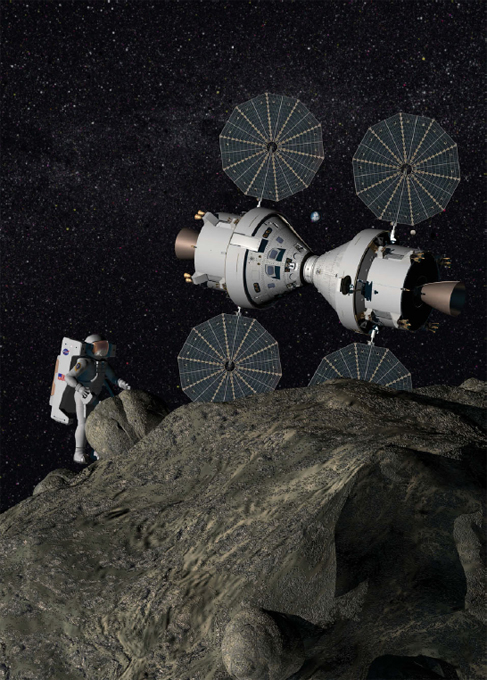National and International Programs
in Planetary Science
RELATIONSHIPS BETWEEN PLANETARY SCIENCE PROGRAMS AT NASA AND NSF
The principal federal agencies that support the nation’s programs in planetary science are the Planetary Division (PSD) of NASA’s Science Mission Directorate and the Division of Astronomical Sciences (AST) in NSF’s Directorate for Mathematical and Physical Sciences.
The primary purpose of NSF/AST is to support research in ground-based astronomy, to provide access to world-class research facilities, and to support the development of new instrumentation and next-generation facilities (Chapter 10). Planetary science directly benefits from NSF’s activities in two ways. First, a program of peer-reviewed research grants and postdoctoral fellowships supports individual investigators conducting theoretical, observational, and laboratory studies. Such grants support all astronomical disciplines, with no predetermined allocations. Second, NSF provides peer-reviewed access to telescopes at public facilities such as the National Astronomy and Ionosphere Center, the National Radio Astronomy Observatory, the National Optical Astronomy Observatory, and the international Gemini Observatory (Figure 2.1).
The annual budget of NSF/AST is currently approximately $230 million. Planetary astronomers must compete against all other astronomers for access to both research grants and telescope time, however, and thus only a small fraction of AST’s facilities and budget support planetary science (Figure 2.2).
The primary goals of NASA’s PSD are to ascertain the origin and evolution of the solar system and to understand the potential for life beyond Earth.1 These goals are advanced through a combination of spacecraft missions, technology development activities, support for research infrastructure, and research grants (Figures 2.3 and 2.4). The annual budget of the PSD is currently about $1.3 billion, the bulk of which is spent on the development, construction, launch, and operation of spacecraft. Two types of spacecraft missions are conducted: large flagship missions strategically directed by the PSD, and smaller Discovery and New Frontiers missions proposed and led by principal investigators (PIs) (Chapter 9). The choice and scope of strategic missions are determined through a well-developed planning process, drawing its scientific inputs from advisory groups both internal and external (e.g., NRC) to NASA. The PI-led missions are selected by a peer-review process that considers the scientific, technical, and fiscal merit of competing proposals submitted in open competition: proposals can be solicited (1) for investigations at specified planetary targets as determined through a strategic planning process (e.g., New Frontiers) or (2) for investigations not limited as to choice of solar system target and science objectives (e.g., Discovery).
Technology development activities (Chapter 11) and support for research infrastructure (Chapter 10) are determined through a combination of strategic planning and proposal competition. The PSD’s research grants

FIGURE 2.1 The Arecibo Observatory in Puerto Rico. Arecibo is used for radar observation of the Moon, Mars, Venus, Mercury, nearby asteroids, Saturn’s rings, and the satellites of Jupiter and Saturn. SOURCE: Courtesy of the NAIC-Arecibo Observatory, a facility of NSF.
(Chapter 10) are awarded through peer review of proposals submitted to a variety of research programs for analysis of ground- and space-based telescopic observations, theory and modeling, laboratory analyses, terrestrial fieldwork, and analysis of data from past and present missions.
RELATIONSHIPS TO OTHER NASA SCIENCE PROGRAMS
Planetary science activities at NASA are strongly coupled to the agency’s other science programs in its Astrophysics, Heliophysics, and to a limited extent, Earth Science divisions. Each is addressed below in more detail.
NASA’s Astrophysics Division
The major science goals of the Astrophysics Division are to discover how the universe works, to explore how the universe began and evolved, and to search extrasolar planetary environments that might hold keys to life’s origins or might themselves even sustain life.2 Strong scientific synergy exists between the studies of extrasolar planets and studies of Earth’s planetary neighborhood. The former area of study provides planetary systems immense in the variety of their structures and stages of evolution: known exoplanets now range from super-Jupiters to super-Earths. The latter area of study affords the opportunity for detailed—often in situ—examination of the formation and evolution of one specific planetary system. A less obvious synergy is that space-based telescopes can support a host of user communities. The Hubble Space Telescope, for example, is a powerful observational
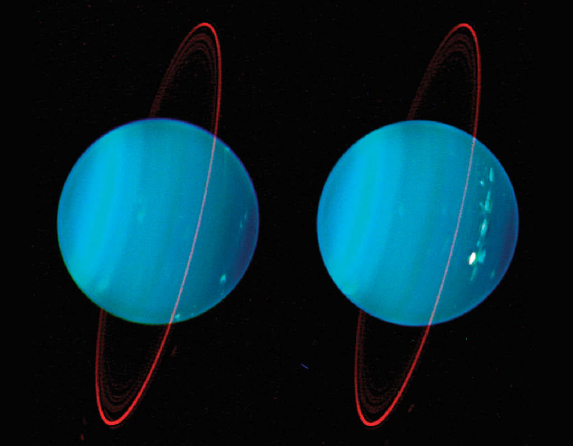
FIGURE 2.2 Images of Uranus taken with the Keck Observatory demonstrating the cloud features that were not visible in Voyager images obtained more than two decades ago. SOURCE: Courtesy of Lawrence Sromovsky, University of Wisconsin-Madison Space Science and Engineering Center. Although the Keck Observatory is a private facility, NASA and NSF funding allows public access to it.
tool for remote sensing of solar system objects, as well as a facility that probes the depths of the cosmos. The same is true of other Astrophysics Division assets, such as the Spitzer Space Telescope, the Chandra X-ray Observatory, the Stratospheric Observatory for Infrared Astronomy, FUSE, the International Ultraviolet Explorer, WISE, IRAS, and others. The James Webb Space Telescope will also make significant contributions to planetary science. Chapter 10 contains details of the contributions that ground- and space-based telescopes make to planetary science.
NASA’s Heliophysics Division
The Heliophysics Division sponsors research in solar and space physics, with a particular emphasis on understanding the Sun and its interactions with Earth and other bodies in the solar system.3 This research also encompasses study of the particle and field environments of other solar system bodies and, in particular, comparative studies of planetary magnetospheres, ionospheres, and upper atmospheres.4 Such studies allow understanding of basic physical processes observed in the geospace environment to be applied to other solar system objects. This capability provides important opportunities to validate understanding of these processes by observing their behavior in multiple planetary settings. Heliophysics activities also benefit planetary science by providing basic data on changes in solar insolation, the solar wind, and the interplanetary magnetic field, which can be connected to changes observed in planetary environments.
Studies of the particle and field environments of planetary bodies have been an integral component of NASA’s planetary missions since the launch of Mariner 2 in 1962. Indeed, the goals of flagship planetary missions such
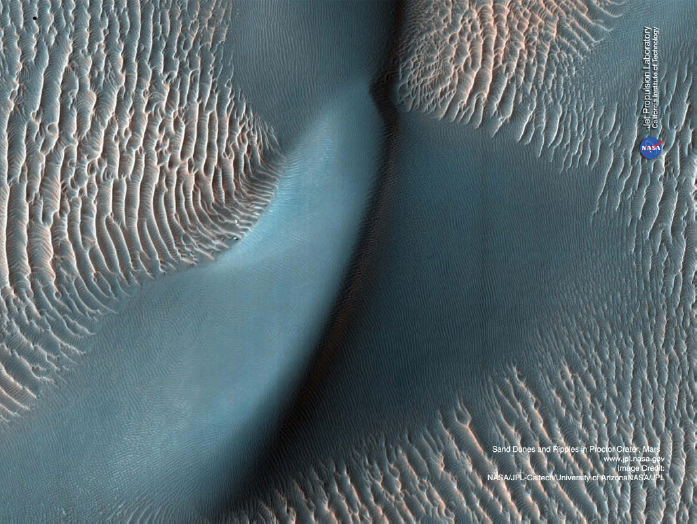
FIGURE 2.3 Sand dunes on Mars photographed by Mars Reconnaissance Orbiter. SOURCE: NASA/JPL-Caltech/University of Arizona.
as the Voyagers, Galileo, and Cassini are highly relevant to the heliophysics community. The first decadal survey of the heliophysics community gave relatively high priority to the Jupiter Polar Mission, an initiative designed to image the jovian aurorae, determine the electrodynamic properties of the Io flux tube, and identify magnetosphere-ionosphere coupling processes.5 The heliospheric decadal report also discussed a separate Io electrodynamics mission designed to conduct in situ measurements in the Io flux tube. Although the Io mission has not come to pass, instrumentation on the PSD’s Juno spacecraft will allow the main objectives of the proposed Jupiter Polar Mission to be achieved.6 Important synergy between heliophysics and planetary missions also exists in their instruments. Heliophysics instruments are usually relatively small with low power and data-downlink requirements, thereby offering heritage readily implemented on planetary missions.
NASA’s Earth Science Division
Planetary science also has strong scientific links to SMD’s Earth Science Division (ESD). The major science goal of this division is to advance Earth system science to meet the challenges of climate and environmental change.7 Advances in these areas will lead to a better understanding of Earth as a terrestrial planet and will obtain data essential to understanding the origin and evolution of a terrestrial planetary biosphere. To this end, SMD
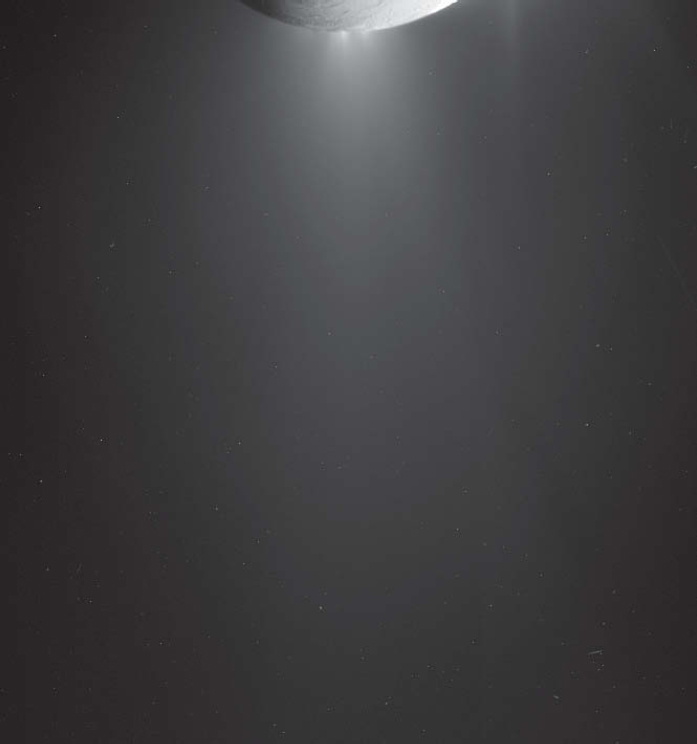
FIGURE 2.4 The plumes from the south pole of Saturn’s tiny moon Enceladus. SOURCE: NASA/JPL/Space Science Institute.
recently asked the community for input on connections and synergies between the research goals of the ESD and those of the PSD’s Astrobiology program. Since the two programs share a common interest in the interactions between the biosphere and its planetary environment, research addressing the goals of one program has a potential for contributing to achieving the goals of the other. SMD plans to use community input to plan possible joint research topics, workshops, and other cooperative activities.
Because Earth is the most intensely studied planet from space, there is synergy between the science and the observational techniques developed for remote sensing of Earth. It is important to remember, however, that the instruments deployed on Earth-orbiting satellites may not be directly applicable for use in other planetary environments. The masses, volumes, power requirements, and data downlink rates of instruments used to study Earth are typically incompatible with the more limited capacities of planetary spacecraft.
RELATIONSHIPS TO OTHER NSF PROGRAMS
As mentioned above, the principal source of planetary science funding within NSF is in its Division of Astronomical Sciences. However, other parts of NSF also make small but important contributions to planetary science.
NSF’s Office of Polar Programs
The Office of Polar Programs (OPP) provides access to and logistical support for researchers working in Antarctica. Earth’s south polar region is of direct relevance to planetary science because it is the world’s most productive hunting ground for meteorites and because it contains environments relevant to studies of Mars and the icy satellites of the outer solar system. The meteorite collection program is a cooperative activity involving OPP, NASA, and the Smithsonian Institution; NSF and NASA currently support the fieldwork (Figure 2.5). Initial examination of samples is done at the Astromaterials Acquisition and Curation Office at NASA’s Johnson Space Center, and characterization and long-term curation are the responsibility of the Smithsonian’s National Museum of Natural History.
Many features of the Antarctic environment are of direct relevance to planetary science, and to astrobiology in particular. Antarctica’s Dry Valleys have many features that make them plausible analogs of a younger, warmer, wetter Mars. Similarly, the physical, chemical, and biological studies of Antarctica’s perennially ice-covered lakes can advance understanding of the habitability of the oceans thought to exist beneath the icy surface of some of the satellites of the giant planets. Studies of these and other topics of planetary relevance are supported at a modest level by OPP’s program of grants to individual investigators.
NSF’s Directorate for Geosciences
Grants awarded by the Atmospheric and Geospace Sciences Division provide modest support for research concerning planetary atmospheres and magnetospheres. Similarly, the Earth Science and Ocean Sciences divisions have supported studies of meteorites and ice-covered bodies. Such grants, although small compared with NASA’s activities in similar areas, are important because they provide a vital source of funding to researchers, mostly to support graduate students and postdoctoral fellows. More importantly, they provide a key linkage between the relatively small community of planetary scientists and the much larger community of researchers studying Earth.
RELATIONSHIP TO NASA’S HUMAN EXPLORATION PROGRAM
Throughout the space age there have been periods of tension and cooperation between the human spaceflight program and the planetary science program. The greatest degree of cooperation between the two occurred during the Apollo era, when scientists were involved in the selection of landing sites and the development of exploration goals, and also benefited heavily from the lunar samples and other data returned from the six Apollo landings (Figure 2.6).
More recently, among the goals of the Vision for Space Exploration were the return of humans to the Moon and the development of new rockets and human spacecraft, designated Constellation. NASA’s Exploration Systems Mission Directorate (ESMD) also funded the first of what was planned to be a series of lunar precursor missions known as the Lunar Reconnaissance Orbiter (LRO), and then the Lunar Crater Observation and Sensing Satellite (LCROSS). Both missions played a major role in helping to reinvigorate lunar science in the United States. However, the need for funds for the Constellation program led to cuts in the space science budget which also affected

FIGURE 2.5 Scientists gathering meteorites in Antarctica, supported by NSF grants. SOURCE: Courtesy of Silvio Lorenzetti, Swiss Federal Institute of Technology, Zurich.
the planetary science program in significant ways, including cuts in technology development and other budgets, particularly the Mars program line.
In fall 2009, the U.S. Human Spaceflight Plans Committee—also known as the Augustine Committee—presented the results of its study of options for human spaceflight.8 In February 2010, the White House proposed NASA’s FY2011 budget. From the planetary science perspective, the major impact of the proposed budget was the cancellation of plans for returning humans to the Moon, and the initiation of a series of robotic precursor missions to targets such as near-Earth objects (NEOs), the Moon, and possibly the martian moons Phobos and Deimos. At the time the present decadal survey report was written the outcome of the congressional budgeting process was unclear, but it appeared likely that the robotic precursor program would not be funded to the extent originally proposed.
Human space exploration is undertaken to serve a variety of national and international interests. Indeed, the President, Congress, and the American public play a greater role in shaping the human-exploration agenda than does the scientific community. Human exploration can provide important opportunities to advance science, but science is not the primary motivation. Measurements using remote sensing across the electromagnetic spectrum, atmospheric measurements, or determinations of particle flux density are by far best and most economically conducted using robotic spacecraft. But there is an important subset of planetary exploration that can benefit from
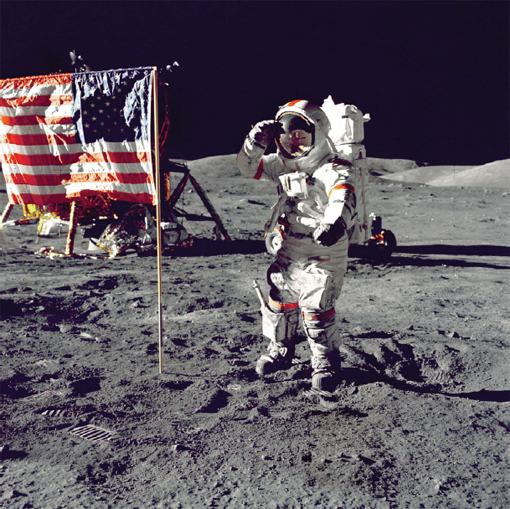
FIGURE 2.6 Apollo 17 astronaut Gene Cernan on the Moon’s surface. The Apollo program was the last widespread cooperation between planetary scientists and the human spaceflight program, and the later Apollo missions provided a wealth of scientific data about the Moon. SOURCE: NASA.
human spaceflight. These are missions to the surfaces of solid bodies whose surface conditions are not too hostile for humans. For the foreseeable future, humans can realistically explore only the surfaces of the Moon, Mars, Phobos and Diemos, and some asteroids (Figure 2.7). The determination of which asteroids might be realistic human exploration targets will include considerations of gravity, safety, orbit, and richness of scientific return based on precursor measurements. It is likely that the subset of asteroids that are true potential targets is much smaller than the observed inventory of NEOs and should be the subject of a separate study. If the development
of a heavy-lift launch vehicle proceeds as planned, the surface of the Moon or a near-Earth asteroid is potentially accessible by humans sometime after 2022, but Mars remains a more distant goal for human exploration.
Precursor Robotic Missions
If the Apollo experience is an applicable guide, robotic missions to targets of interest will undoubtedly precede human landings. Human exploration precursor measurement objectives focus mainly on issues regarding health and safety and engineering practicalities, rather than science. Although there are a number of examples where the interests intersect, for example finding a resource like water, the motivation and ultimate data applications of the two goals are typically quite different.
A positive example of synergy between the human exploration program and planetary science is the current LRO mission (Figures 2.8 and 2.9). This project was conceived as a precursor for the human exploration program but ultimately was executed in concert with the planetary science community. With one exception, a science peer-review process was followed for instrument selection. In fall 2010, after the end of the exploration phase of LRO’s mission, responsibility for the spacecraft was turned over to the PSD. Some 23 participating scientists were added to ensure that top-quality science is executed. By building on lessons learned from LRO, an effective approach to exploration-driven robotic precursor missions can be devised.
Despite the positive recent example of LRO, the committee is concerned that, as demonstrated in the recent past, human spaceflight programs can cannibalize space science programs. The committee agrees with the statement in the Human Spaceflight Plans Committee report that “it is essential that budgetary firewalls be built between these two broad categories of activity. Without such a mechanism, turmoil is assured and program balance endangered.” 9
Within the planetary science program there have been and will likely continue to be peer-reviewed missions selected that are destined for likely targets of human exploration. Two relevant examples are the New Frontiers projects MoonRise (a lunar South Pole-Aitkin Basin sample return mission) and OSIRIS-REx (an asteroid sample return mission) now under study for eventual down selection to one mission in 2011.10 The committee believes that it is vital to maintain the science focus of such peer-reviewed missions and not to incorporate human exploration requirements after the mission has been selected and development has begun. If the data gathered by such missions have utility for human exploration, the analysis should be paid for by the human exploration program and firewalled from the science budget. Similarly, if the human exploration program proposes a precursor mission (such as LRO) and there is an opportunity for conducting science at the destination, the science programs should be very cautious about directly or indirectly imposing mission-defining requirements, and be willing to pay for any such requirements.
The need for caution does not rule out the possibility of carefully crafted collaborations, however. It may be possible, for example, to put science-focused instrumentation on some of these missions, or for science missions to certain targets to carry ESMD-funded instrumentation. Also, missions designed to prepare for future human exploration can be “re-purposed” to address science questions once their primary mission has been completed, as was recently done for LRO.
Human Landed Missions and Science
In popular culture, the term “robot” conjures up a fully autonomous, reasoning, anthropomorphic creature such as envisioned in Isaac Asimov’s I, Robot.11 However, in modern industrial and scientific applications, robots are best at the “three Ds”: dull, dirty, or dangerous work. Robotic systems can be designed to operate in extreme environments deadly to humans, but they are programmed and at times teleoperated by humans. Currently, even the most sophisticated robotic spacecraft have limited intellectual and physical capabilities. Rovers and orbiters do only what they are told and are incapable of completely independent autonomous reasoning. By comparison, human explorers on other worlds are intellectually flexible and adaptable to different situations, as demonstrated by the Apollo sample collection and the Hubble on-orbit servicing and repair. Humans develop and communicate ideas, not just data. Human adaptability and capability in an unstructured environment far surpass those of robots,
and will for the foreseeable future. Conversely, the cost of human exploration is perhaps 10 to 100 times that of robotic exploration, primarily because of the human need for life support, sleeping quarters, eating, and safety.

FIGURE 2.8 A natural bridge on the Moon photographed by the Lunar Reconnaissance Orbiter. SOURCE: NASA Goddard Space Flight Center/Arizona State University.
What should be the roles of humans and robots in meeting the goals of planetary exploration? For decades NRC studies of human spaceflight have concluded that there is no a priori scientific requirement for the human exploration of the Moon and Mars.12,13 In reviewing the past studies and current planetary science goals, the committee reached the same conclusion as past NRC studies that most of the key scientific lunar and NEO exploration

FIGURE 2.9 The Apollo 16 landing site photographed by the Lunar Reconnaissance Orbiter. SOURCE: NASA Goddard Space Flight Center/Arizona State University.
goals can be achieved robotically. Scientifically useful investigations should still be developed to augment human missions to the Moon or NEOs. The committee urges the human exploration program to examine this decadal survey and identify—in close coordination and negotiation with the SMD—objectives whereby human-tended science can advance fundamental knowledge. Finding and collecting the most scientifically valuable samples for return to Earth may become, as they were in the Apollo program, the most important functions of a human explorer on the Moon or an asteroid.
For several decades, the NRC has conducted studies of the scientific utility of human explorers or human-robotic exploration teams for exploring the solar system. Invariably, the target of greatest interest has been Mars. The scientific rationale cited has focused largely on answering questions relating to the search for past or present biological activity. On the basis of the importance of questions relating to life, the committee concluded that for the more distant future, human explorers with robotic assistance may contribute more to the scientific exploration of Mars than they can to any other body in the solar system.14,15 Robotic missions to Mars, either purely for science or as precursors to a human landing, can provide the basic scientific data and lay the groundwork for a human presence. Humans will then take exploration to the next steps by making sense of the complex martian environment, rapidly making on-the-spot decisions to choose the right spots for sampling, performing the best experiments, and then interpreting the results and following up opportunistically.
Summary
For decades, planetary science has adopted a graduated, step-wise approach to exploration, from initial flyby to orbital reconnaissance, followed by in situ investigation and ultimately a return of samples to laboratories for exhaustive examination. Although humans are not required for the return of samples from the Moon, asteroids, or Mars, if humans are going to visit these bodies, collecting and returning high-quality samples are among the most scientifically important things they can do.
The robotic and human exploration of space should be synergistic, both at the program level (e.g., science probes to Mars and humans to Mars) and at the operational level (e.g., humans with robotic assistants). Both drive the development of new technologies to accomplish objectives at new destinations. However, this effort must proceed without burdening the space science budget or influencing its process of peer-review-based selection of science missions. Conversely, NASA can proceed to develop the robotic component of its human exploration program. Through this cooperative and collaborative effort, NASA can accomplish the best for both programs.
INTERNATIONAL COOPERATION IN PLANETARY SCIENCE
Planetary exploration is an increasingly international endeavor, with the United States, Russia, Europe, Japan, Canada, China, and India independently or collaboratively mounting major planetary missions. As budgets for space programs come under increasing pressure and the complexity of the missions grows, international cooperation becomes an enabling component. New alliances and mechanisms for cooperation are emerging, enabling partners to improve national capabilities, share costs, build common interests, and eliminate duplication of effort. But international agreements and plans for cooperation must be crafted with care, because they also can carry risks. The management of international missions adds layers of complexity to their technical specification, management, and implementation. Different space agencies use different planning horizons, funding approaches, selection processes, and data dissemination policies. Nonetheless, international cooperation remains a crucial element of the planetary program; it may be the only realistic option for undertaking some of the most ambitious and scientifically rewarding missions.
Mechanisms and Recent Examples of Cooperation
Flagship missions afford the greatest potential for NASA and other space agencies to unite resources and meet difficult challenges. The Galileo and Cassini-Huygens missions to explore the jovian and saturnian systems are superb examples of international cooperation of this scale (Figures 2.10 and 2.11). Flagship missions like Galileo and Cassini are complex to manage and implement because they involve integrating major spacecraft components supplied by different nations (engines, antennas, probes, dual spacecraft) into a single flight system. Still, to minimize the high fractional costs of launch and orbital insertion or landing, this architecture can be the most cost-effective one. Recently NASA and the European Space Agency (ESA) have been considering joint missions of this integrated form to undertake Mars sample return and to explore Titan simultaneously from orbit and in situ.

FIGURE 2.10 The surface of Titan as seen by the Huygens lander. Cassini-Huygens is an example of successful international cooperation in planetary exploration. SOURCE: ESA/NASA/JPL/University of Arizona.
A less complex but still powerful approach involves joint observations from multiple spacecraft each delivered to a planetary target by an individual space agency, as was used in the reconnaissance of Comet Halley. Discussion has been ongoing of a coordinated program of this form to explore the Jupiter system, wherein NASA would contribute a Europa orbiter (recommended by the NRC’s first planetary decadal survey16) and ESA would contribute a Ganymede orbiter (see Chapters 7 and 8). Likewise an International Lunar Network has been under consideration wherein NASA might provide two or more nodes while other nations would provide additional nodes.
A common collaborative arrangement is the provision of resources by foreign partners to NASA-led missions (and vice versa); these resources might include, for example, payload instruments, other key flight elements, or team members. NASA contributions to foreign missions have been funded by programs such as the past Missions of Opportunity or the present SALMON (Stand Alone Missions of Opportunity). For example, India’s Chandrayaan-1 lunar mission carried two U.S. experiments, and NASA’s Lunar Reconnaissance Orbiter includes
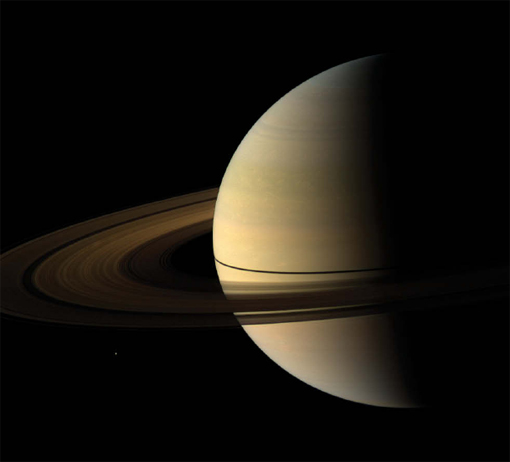
FIGURE 2.11 Saturn and its rings as imaged by Cassini. SOURCE: NASA/JPL/Space Science Institute.
a Russian instrument. NASA’s Mars Exploration Rover and Phoenix missions included instruments and team members from Germany, Denmark, and Canada. Russia, France, Spain, and Canada are contributing elements of the Mars Science Laboratory payload, and Italy and the United Kingdom have contributed to the Mars Reconnaissance Orbiter mission. NASA’s second New Frontiers mission Juno will carry an auroral instrument provided by the Italian Space Agency. NASA is providing two instruments to ESA’s Rosetta comet mission; European nations are making multiple contributions to the payload for Dawn, NASA’s mission to Vesta and Ceres. These collaborations dramatically expand mission capabilities and are crucial to developing a strong and most effective international scientific community. Among cooperative efforts now underway is NASA’s contribution to the instrument payload for the ESA-led Mars Trace Gas Orbiter, part of an evolving long-term cooperation between NASA and ESA in Mars exploration.
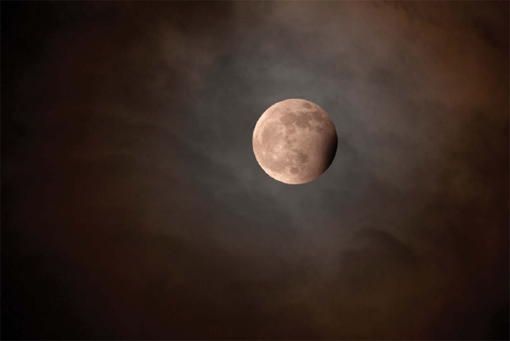
FIGURE 2.12 The International Year of Astronomy ended with a lunar eclipse. SOURCE: Courtesy of Jean Paul Roux.
Guidelines for International Cooperation
Notwithstanding the enormous benefits, both societal and scientific, that international cooperation affords, such agreements should not be entered into without due consideration. Because of more complicated aspects of agreement on technical specifications, management by multiple interests, implementation and integration procedures, and the impact of the International Traffic in Arms Regulations, cost and schedule growth can occur. In part, this happens because U.S. and international partnering agencies can have different goals for the endeavor, use different fiscal timelines and commitment schedules, and employ incongruent proposal requirements and selection processes. Although NASA and NSF should embrace the opportunities for collaboration with foreign partners, they must do so with full understanding of the potential risks and how they can be managed. The committee drew from the general principles and guidelines for international cooperation laid out in past studies, in particular the joint report of the Space Studies Board and the European Space Science Committee titled U.S.-European Collaboration in Space Science.17 Following consideration of a series of case studies examining the positive and negative aspects of past transatlantic cooperative space-science ventures, that report laid out eight essential ingredients that an agreement to engage in an international collaboration must contain; they are (summarized from pp. 102-103 of the 1998 report) as follows:
1. Scientific support through peer review that affirms the scientific integrity, value, requirements, and benefits of a cooperative mission;
2. A historical foundation built on an existing international community, partnership, and shared scientific experiences;
3. Shared objectives that incorporate the interests of scientists, engineers, and managers in common and communicated goals;
4. Clearly defined responsibilities and roles for cooperative partners, including scientists, engineers, and mission managers;
5. An agreed-upon process for data calibration, validation, access, and distribution;
6. A sense of partnership recognizing the unique contributions of each participant;
7. Beneficial characteristics of cooperation; and
8. Recognition of the importance of reviews for cooperative activities in the conceptual, developmental, active, or extended mission phases—particularly for foreseen and upcoming large missions.
Summary
Despite the negative consequences that may potentially accrue if cooperative activities are not planned and conducted in a manner consistent with the eight principles listed above, the committee strongly supports international efforts and encourages the expansion of international cooperation on planetary missions to accelerate technology maturation and share costs. International cooperation generally provides resilience to long-term space programs and allows optimal use of an international workforce and expertise. Multiple international space powers have now mastered major technological challenges required to explore the solar system. As such, international cooperation should remain a key element of the nation’s planetary exploration program. An internationally engaged program of solar system exploration can unite stakeholders worldwide and lay the groundwork for humans to venture into space in the next phases of exploration (Figure 2.12).
1. National Aeronautics and Space Administration (NASA) Science Mission Directorate. 2010. 2010 Science Plan For NASA’s Science Mission Directorate. NASA, Washington, D.C., pp. 74-75.
2. NASA Science Mission Directorate. 2010. 2010 Science Plan For NASA’s Science Mission Directorate. NASA, Washington, D.C., pp. 74-75.
3. NASA Science Mission Directorate. 2010. 2010 Science Plan For NASA’s Science Mission Directorate. NASA, Washington, D.C., pp. 74-75.
4. See, for example, National Research Council, The Sun to the Earth—and Beyond: Panel Reports, The National Academies Press, Washington, D.C., 2003, pp. 73-87.
5. National Research Council. 2003. The Sun to the Earth—and Beyond: A Decadal Research Strategy in Solar and Space Physics. The National Academies Press, Washington, D.C., p. 6.
6. National Research Council. 2009. A Performance Assessment of NASA’s Heliophysics Program. The National Academies Press, Washington, D.C., pp. 5 and 32.
7. NASA Science Mission Directorate. 2010. 2010 Science Plan For NASA’s Science Mission Directorate. NASA, Washington, D.C., pp. 74-75.
8. Executive Office of the President. 2009. Review of U.S. Human Spaceflight Plans Committee, Seeking a Human Spaceflight Program Worthy of a Great Nation. Washington, D.C.
9. Executive Office of the President. 2009. Review of U.S. Human Spaceflight Plans Committee, Seeking a Human Spaceflight Program Worthy of a Great Nation. Washington, D.C.
10. On May 25, 2011, following the completion of this report, NASA selected the OSIRIS-REx asteroid sample-return spacecraft as the third New Frontiers mission. Launch is scheduled for 2016.
11. Isaac Asimov. 1950. I, Robot. Gnome Press, Inc., New York, N.Y.
12. National Research Council. 1997. The Human Exploration of Space. National Academy Press, Washington, D.C.
13. National Research Council. 2002. Safe on Mars: Precursor Measurements Necessary to Support Human Operations on the Martian Surface. National Academy Press, Washington, D.C.
14. National Research Council. 1997. The Human Exploration of Space. National Academy Press, Washington, D.C.
15. National Research Council. 2002. Safe on Mars: Precursor Measurements Necessary to Support Human Operations on the Martian Surface. National Academy Press, Washington, D.C.
16. National Research Council. 2003. New Frontiers in the Solar System: An Integrated Exploration Strategy. The National Academies Press, Washington, D.C.
17. National Research Council and European Science Foundation. 1998. U.S.-European Collaboration in Space Science. National Academy Press, Washington, D.C., pp. 102-103.

